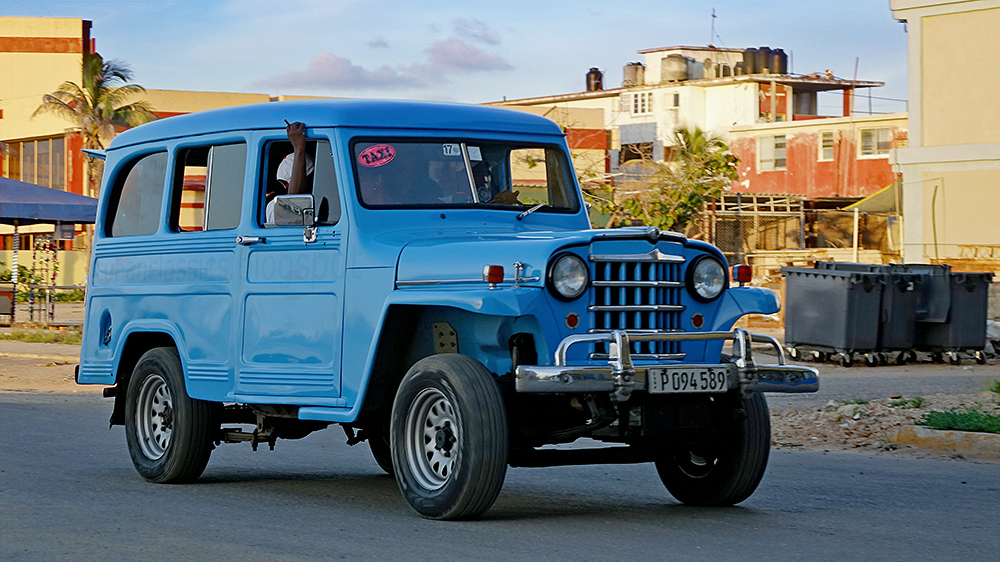The rugged Jeep Station Wagon is a great drive not only in Cuba’s countryside, but also in the dense traffic of Havana. Here, the high seating position helps keeping the overview, a trait that many fans of modern SUVs appreciate, too.
The Jeep Station Wagon was conceived around 1944, when it became foreseeable that the wartime production of the Jeep 4x4 would soon begin to slow down. With a typical Scandinavian approach to practicality, freshly appointed Willys-Overland president Charles E. Sorensen, a descendant of Danish immigrants, looked for a second mainstay for the company and commissioned industrial designer Brooks Stevens to create a new vehicle based on the military Jeep, to be launched in 1946.
Stevens proposed a closed station wagon, based on a lengthened Jeep 4x4 chassis. To save costs, the new vehicle should have an all-steel body and omit the rather expensive all-wheel drive. As Willys-Overland didn’t have in-house steel stamping, Stevens created “flat” body panels that could be cheaply produced by makers of household appliances, without the need for expensive automotive body tools.
The practical all-steel body of the 1946 Jeep was quite revolutionary, as it was much easier to produce and to maintain than the prevailing wooden construction. Thus, the Jeep influenced a new breed of station wagons that should emerge in the passenger car segment, starting with the 1949 Plymouth Suburban. In order to avoid scaring off the customers with the new construction principle, early Willys Station Wagons even received a three-tone paint job that resembled a traditional “Woodie.”
To keep the Jeep ahead of the competition when all-steel wagons increasingly became common, all-wheel drive returned for 1950, together with a “facelift” that introduced the V-shaped front grille pictured here. This was the only visual modernization during the 19-year-long production run from 1946 through 1965. Otherwise, the Jeep Station Wagon remained looking virtually the same. Only the amount and position of the horizontal bars in the Jeep's front grille changed with each model year. To know the year of production, you’ll need to count. This one is from 1953.
Its unparalleled combination of ultimate sturdiness and off-road capabilities in a rather economic vehicle made the Jeep Station Wagon a long-standing mainstay in the Jeep portfolio, and incidentally anticipated the modern SUV formula, decades before this car segment became widely popular.

0 Kommentare:
Post a Comment